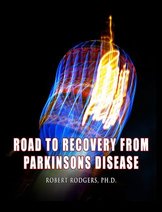A caller on Parkinsons Recovery Radio during my interview with Angela Wensley offered several interesting remedies for Cancer, MS and Parkinsons. His reference to a Lithium Parkinsons treatment is particularly interesting in light of the research study abstract I have included below.
The caller suggests that Lithium may be a treatment for Manganism, a form of manganese toxicity. It is not accepted as a treatment for Manganism.
Lithium is widely used as a mood stabilizer for treating bipolar disorder and other psychiatric conditions. It has an interesting relationship with magnesium. They are chemically related.
The research study below indicates a Lithium Parkinsons treatment might potentially be useful in moderate doses, but two of the subjects included in the study were unable to tolerate the side effects and dropped out of the study. Most of the research focuses on low dose lithium as a preferred dose.
Lithium Parkinsons Treatment Study
IBRO Neurosci Rep. 2023 May 7:14:429-434. Lithium’s effects on therapeutic targets and MRI biomarkers in Parkinson’s disease: A pilot clinical trial
Abstract
Background: Lithium has a wide range of neuroprotective actions, has been effective in Parkinson’s disease (PD) animal models and may account for the decreased risk of PD in smokers.
Methods: This open-label pilot clinical trial randomized 16 PD patients to “high-dose” (n = 5, lithium carbonate titrated to achieve serum level of 0.4-0.5 mmol/L), “medium-dose” (n = 6, 45 mg/day lithium aspartate) or “low-dose” (n = 5, 15 mg/day lithium aspartate) lithium therapy for 24-weeks. Peripheral blood mononuclear cell (PBMC) mRNA expression of nuclear receptor-related-1 (Nurr1) and superoxide dismutase-1 (SOD1) were assessed by qPCR in addition to other PD therapeutic targets. Two patients from each group received multi-shell diffusion MRI scans to assess for free water (FW) changes in the dorsomedial nucleus of the thalamus and nucleus basalis of Meynert, which reflect cognitive decline in PD, and the posterior substantia nigra, which reflects motor decline in PD.
Results: Two of the six patients receiving medium-dose lithium therapy withdrew due to side effects. Medium-dose lithium therapy was associated with the greatest numerical increases in PBMC Nurr1 and SOD1 expression (679% and 127%, respectively). Also, medium-dose lithium therapy was the only dosage associated with mean numerical decreases in brain FW in all three regions of interest, which is the opposite of the known longitudinal FW changes in PD.
Lithium Parkinsons Treatment Conclusion: Medium-dose lithium aspartate therapy was associated with engagement of blood-based therapeutic targets and improvements in MRI disease-progression biomarkers but was poorly tolerated in 33% of patients.




